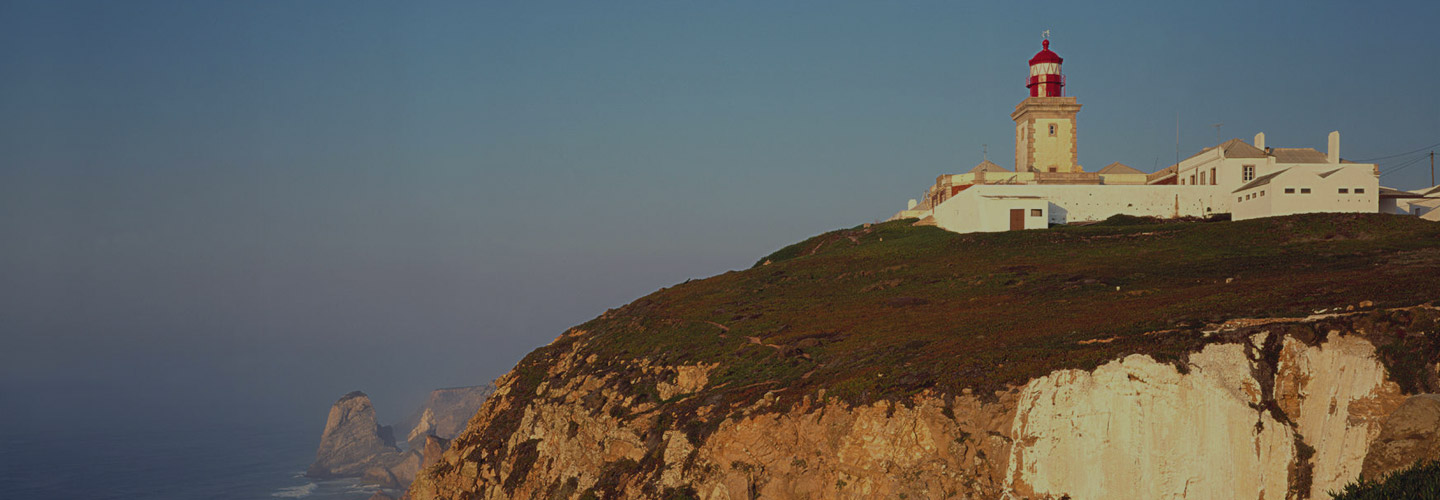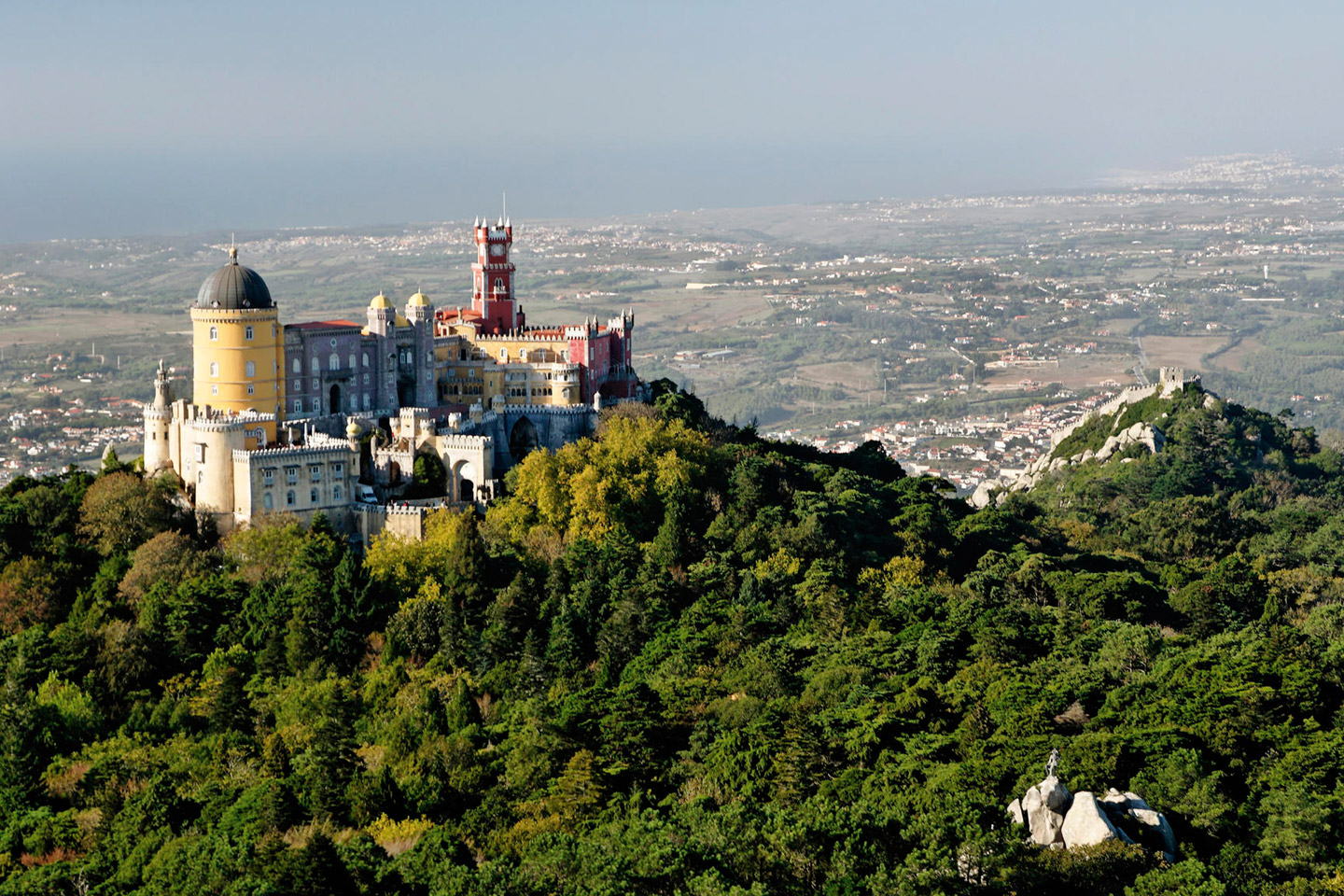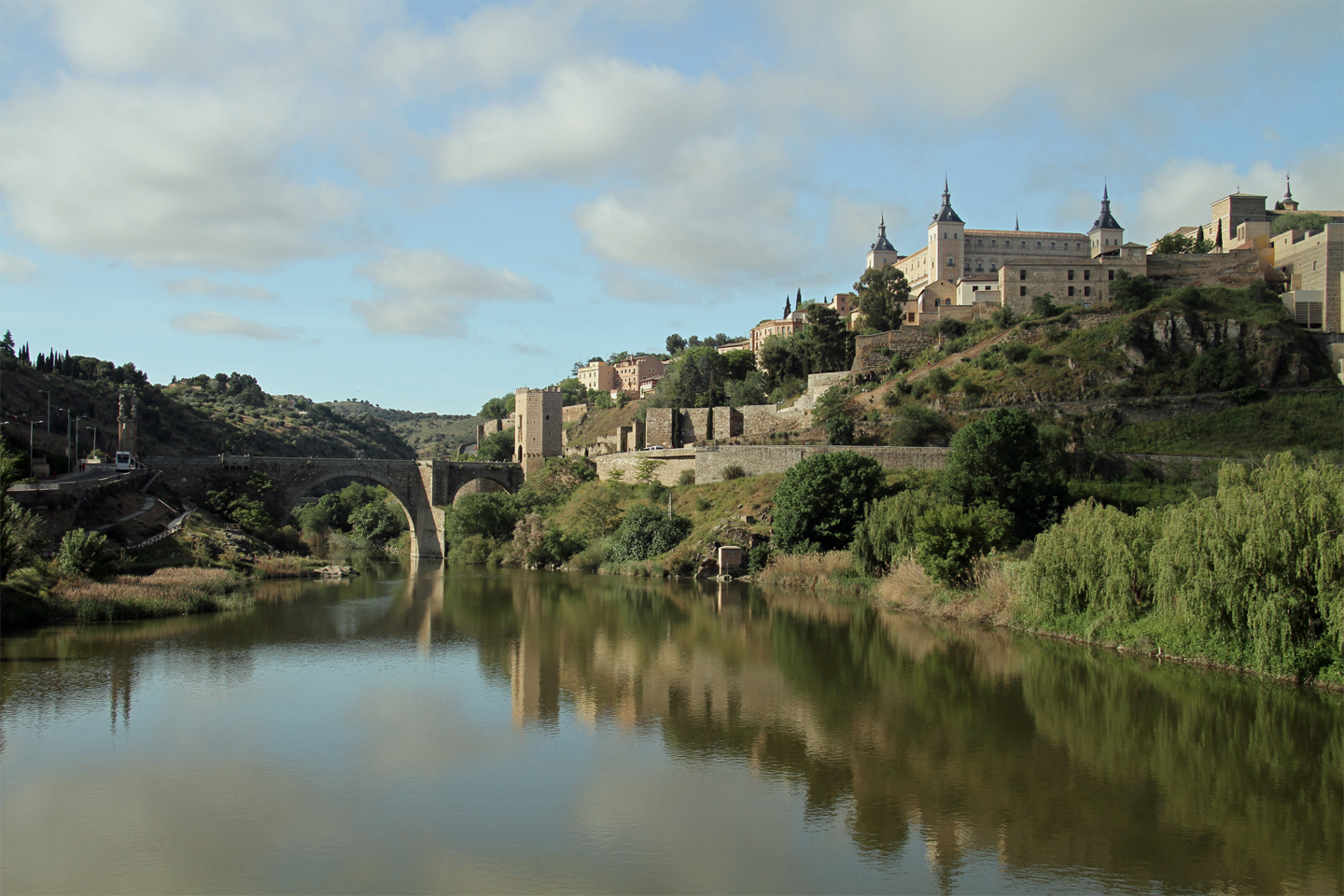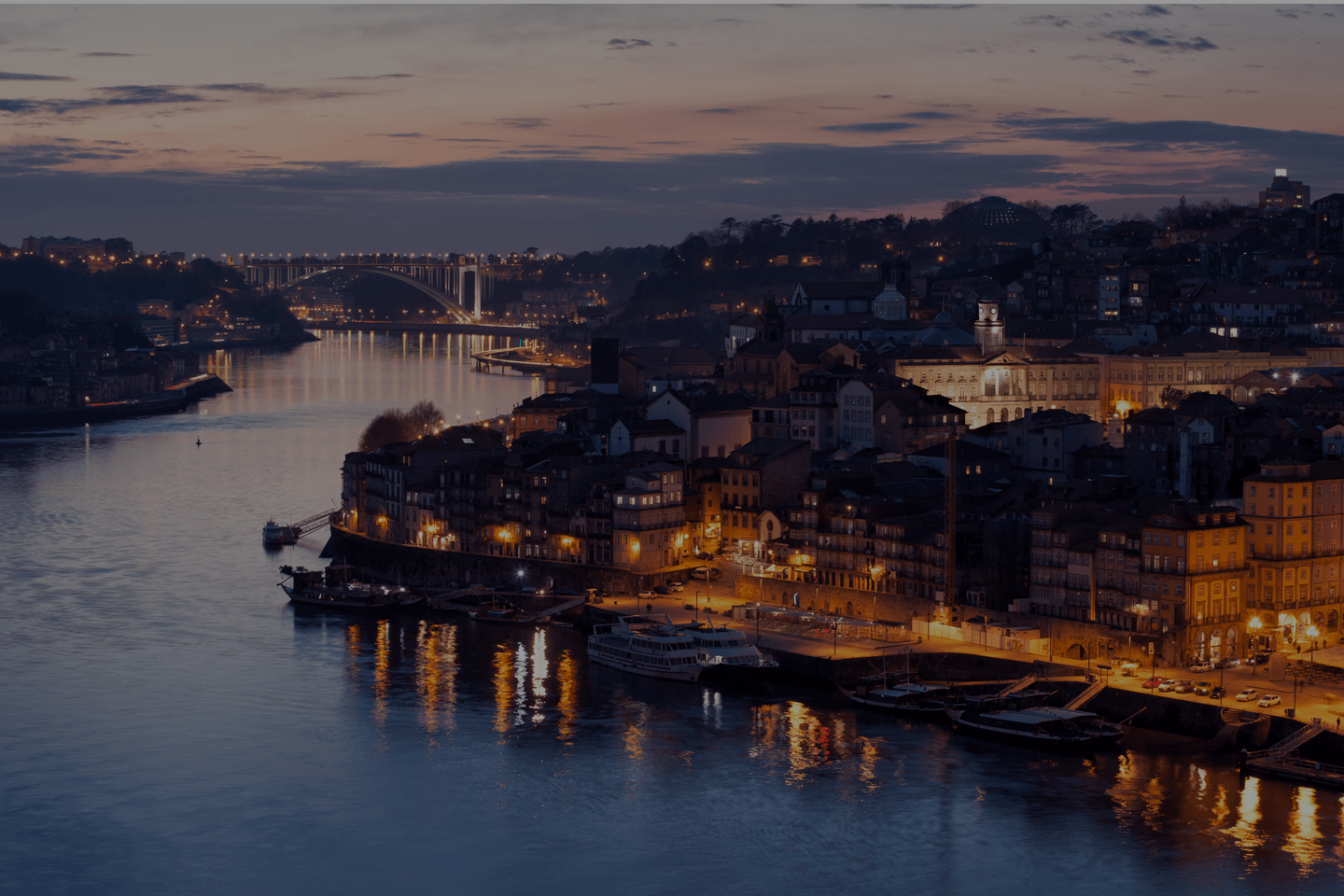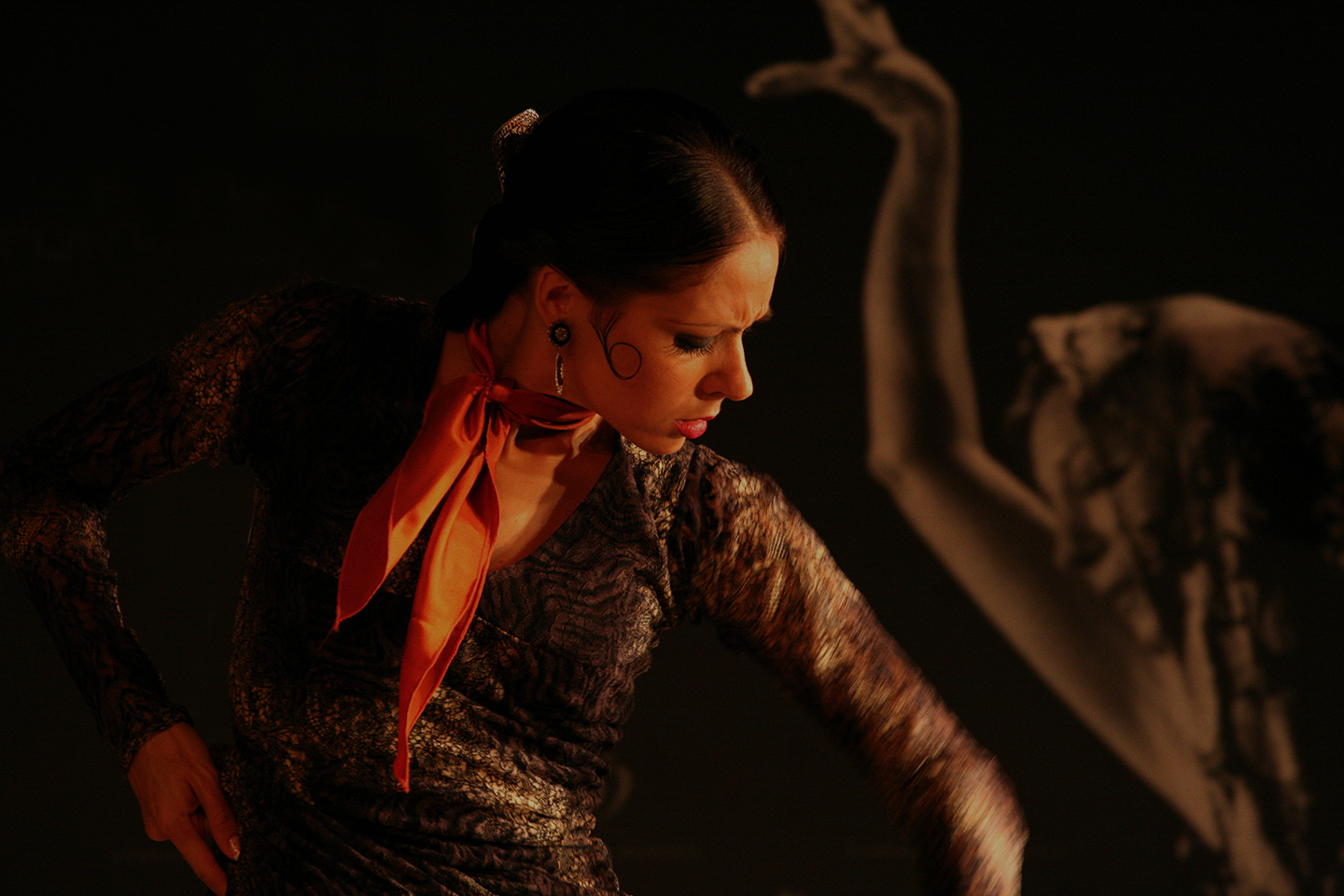Discover the Iberian Peninsula in its entirety. An opportunity to meet the best and most beautiful cities in the two countries. Listening from the nostalgic fado to the flamenco passion, from the churros with chocolate to the cream cakes from Belém. Experience the wonderful gastronomic, landscape, linguistic, climatic, architectural, historical and social contrasts of both countries. You can meet the best professionals, stay in the most exclusive hotels and travel with maximum comfort. Let yourself be drunk by the wonders of these neighboring countries.

THIS IS IBERIA
Day by Day Itinerary and suggested Accommodation
Day 1: Arrival in Lisbon and transfer to your hotel. In the afternoon, depending on your arrival flight, we suggest a possible visit to the city. Our expert local guide will introduce you to a bohemian and flavored atmosphere in old Lisbon. They will visit some of the most traditional places in the city and taste some of their gastronomic specialties, called "petiscos".
2-night accommodation at Pousada de Lisboa *****
Day 2: Visit the Estoril Coast, Cascais and Sintra. The Estoril Coast is closely related to an atmosphere of charm, with numerous attractions, such as famous beaches and charming villas such as Estoril and Cascais. Regarding the city of Sintra and all its natural environment and its heritage, it can be said that it is one of the symbols of Portugal, also declared by UNESCO as a World Heritage Cultural Landscape.
Day 3: Transfer to Évora and visit the city. Our driver will take you in the morning to your next destination, Évora, the capital of Alentejo in Portugal. In the afternoon you can enjoy a walk with our local guide to this wonderful city and there you will discover why it is a World Heritage Site.
1-night accommodation at Hotel Convento do Espinheiro *****
Day 4: Transfer to Seville and visit the city. Today, our private driver will take you to Seville. It's a road trip of about 3 hours.
In the afternoon, our expert local guide will take you to know the Cathedral of Seville, one of the largest in Europe, with its Giralda Tower, and the magnificent Royal Alcazar. Do not miss visiting the Barrio de Santa Cruz and its narrow and picturesque streets full of charisma and history. At night, we will reserve for you a place in the best flamenco tablao in the center of the city. Discover the "goblin" of this art while enjoying a drink or dinner.
2-night accommodation at Alfonso XIII Luxury Collection *****
Day 5: Excursion to Jerez de la Frontera. Our driver will take you to Jerez, a stately city south of Seville, recognized not only for its flamenco singing and purebred Spanish horses but for the quality of its Sherry wines. You can enjoy a walk with our local guide inside the Alcázar, as well as preferred seats in the equestrian show of the Royal Cavalry School. A unique horse dance in the world. After the visit, you can visit a family winery where you will taste some varieties of Sherry, the local, internationally known wine. During the day, our expert will suggest taking some tapas in a "tabanco" or traditional Jerez tavern.
Day 6: Transfer to Granada visiting Ronda. In the morning our driver will take you to deep Andalusia, passing through the villages of the mountainous areas of the north of Cádiz and Málaga, known as the "white villages". Upon arrival in Ronda, the capital of this area, you can meet our local guide to enjoy a walk on foot through its main monuments and the breathtaking views from the Puente Nuevo. Besides, after the visit, you can go out to the surroundings of the city and enjoy a picnic lunch in a family eco-winery while enjoying its exquisite wines. After the visit, in the afternoon, our driver will continue with his transfer to Granada.
2-night accommodation at Palacio de los Patos *****
Day 7: Visit the Alhambra. Let us take you to the world of the Nasrid kings with our educated guide, who will show you this magnificent complex of palaces and gardens from a different perspective. Astrology, mathematics, design, mysticism, engineering, architecture, botany ... everything comes together in the Alhambra. Enjoy this monument World Heritage, its colors and smells, which will remain forever in your memory.
Day 8: Transfer to Valencia. Today, our driver will take you to Valencia. Along the way, we suggest making a stop on your own in the Murcia region, for example, in the baroque town of Lorca or in the capital of Murcia itself. Upon arrival in Valencia, after the road trip, we recommend taking the day off.
2-night accommodation at The Westin Valencia *****
Day 9: Visit the market and Paella cooking class. In the morning, you will have the opportunity to cook a real Valencian paella with a chef, who will take you to a small group, to know the market and the necessary ingredients. After the walk, they will go to work to cook this famous dish of rice and you can taste it in a pleasant and jovial atmosphere.
After lunch, our local guide and our driver will take you to the rest of the city, from its historic center, with the Cathedral and La Lonja, to the Turia Gardens, where the City of Arts and Sciences is located. *Valencia is a great city that can be explored by bicycle, let us know in advance to organize everything.
Day 10: Transfer to Madrid. Today, our private driver will take you to the Valencia-Joaquín Sorolla Station to take your high-speed AVE train to Madrid. It's a trip of about 2 hours. Upon your arrival, another of our drivers will pick you up to take you to your hotel.
In the afternoon, we suggest you make a tapas route through the food markets and taverns of the historical center of Madrid with our guide. You can finish with the entry in the best flamenco show in the capital.
3-night accommodation at The Principal Hotel *****
Day 11: Visit Madrid. From the door of your hotel, our driver and our local guide will accompany you on this full-day tour of Madrid. You can visit the most emblematic areas of the town, such as Paseos del Prado and Recoletos, where the three main museums of the capital are located, as well as the Plaza de Cibeles, the Retiro Park or the Puerta de Alcalá. Going up the Gran Via, Madrid's "Broadway", you can contemplate the palatial architecture of Madrid, and reach the historic center, where Puerta del Sol, Plaza Mayor and Plaza de Oriente are located with the majestic Royal Palace. A flexible itinerary that our professionals will adapt to your tastes and desires.
Day 12: Visit Toledo. In this full-day tour with driver and guide, not only can you enjoy an impressive panoramic view of the birthplace of the painter El Greco from the Tagus River, but you can also enter its narrow streets to visit its many monuments, which are footprints visible of the three religions that for centuries coexisted tolerably: Christians, Arabs and Jews. Our guide will suggest the best place for lunch.
Day 13: Transfer to Barcelona. Today, our private driver will take you to Madrid-Atocha Station to take your high-speed AVE train to Barcelona. It's a trip of about 3 hours. Upon your arrival, another of our drivers will pick you up to take you to your hotel.
In the afternoon, we suggest making a bicycle route through the most curious corners of Barcelona where our guide will also accompany you to take some tapas. Do not miss the Catalan cuisine!
3-night accommodation at Hotel Majestic *****
Day 14: Visit Barcelona. After a good rest, you will start your private full-day tour to Barcelona with our guide and our driver. They will take you to know not only the masterpieces of Gaudí's modernist architecture, such as the Sagrada Familia, Park Güell or the façades of the Casa Milá and Casa Batlló, but also accompany them on a tour through the Gothic Quarter, the old part of Barcelona and where the Jewish community left its mark in this medieval part of the city. During the day, our guide will suggest the best place to have your lunch.
Day 15: Full day excursion to Girona and Figueres. Today we will have a guide and a driver during the day that will take us to the north of Catalonia. Upon arrival in the town of Figueres you can enjoy a guided tour at the Dalí Theater-Museum. This museum is the largest surrealist object in the world. It is located at the old Municipal Theater, a nineteenth-century building destroyed at the end of the Spanish Civil War and in whose ruins, the master Dalí decided to be buried and create his museum. After the visit, our guide will suggest the best place to take your lunch in the region before continuing to Girona, the capital of the province. There you can discover medieval Catalonia and its Hebrew past. The cathedral of Girona has the widest Gothic nave in the world and its intriguing Jewish quarter or "call" will transport it to the Catalan Middle Ages in its deepest roots and its complex socio-religious relations. Before returning to Barcelona we suggest a walk along the colorful banks of the Oñar River.
Day 16: Transfer to San Sebastian. In the morning, our driver will take you to San Sebastian. We suggest a stop by the road in Zaragoza to have lunch or just walk along the banks of the Ebro River as it passes through the Basilica del Pilar. It is also possible to make a stop in Pamplona, the well-known city of San Fermín.
As your arrival in San Sebastian we suggest you rest a little and prepare to have a pintxo route (as tapas are called in the Basque Country) with our expert local guide during the late afternoon. Enjoy the indications of our gourmet guide and get to know this icon of the lifestyle of the Basques up close.
3-night accommodation at María Cristina *****
Day 17: Excursion to Zumaia & Getaria village. Just down the coastline from San Sebastián is a beautiful, unique village, rich in food culture and history, and an unforgettable stretch of coast famous for its “flysch” rock formations. Join our local expert guide on an exploration of Zumaia’s famous beaches and Getaria, the picturesque nucleus of fishing, txakoli winemaking, and grilled seafood.
Start your excursion with a visit to Zumaia’s famed flysch, spectacular rock formations in the Basque Coast Geopark. We explore this geological wonder and the beach made famous in Game of Thrones, before making our way to the little-known gem of Getaria. Still one of the most important entry points in the Basque Country for fresh tuna and shiny Cantabrian anchovies, we stroll through its cobblestone streets with our expert guide. After a tour of the village, head up to a txakoli bodega for a unique tasting that will take you straight to the heart of Basque flavors. Learn more at the source about this fizzy, almost salty white wine, which is firmly rooted in its local terroir and, at the moment, experiencing a renaissance. Finish with a stop in the bustling surfer village of Zarautz, where you will toast over pintxos and wines with your guide and new friends in a mini-tour of the local pintxo scene.
At night, for dinner, we can reserve for you one of the Michelin star restaurants in the city or surroundings.
Day 18: Walking tour of San Sebastian. You cannot miss this charming and romantic city, especially on foot, which is how you will most appreciate it. The surprising beauty of the mountains and beaches of San Sebastian is its calling card. We will begin the tour in front of the María Cristina Hotel, which, together with the elegant Victoria Eugenia Theater, will take us back to the days of the famous San Sebastian Film Festival. We will pass by the Zurriola bridge to see the Kursaal de Moneo Building located on the other side of the river. We will walk along the Boulevard with its characteristic French-style mansions, to get closer to the old town of San Sebastián and the Bretxa market. Once in the Old Town, we will visit the oldest building in the city, the Church of San Vicente, as well as the Plaza de la Constitución, one of the most typical areas to discover the rite of the Basque pintxo. Finally, a walk through the port and along the Playa de la Concha, as well as an ascent by cable car to Mount Igueldo to get the best views of the city on the Bay of La Concha, are essential.
Day 19: Transfer to Oviedo with a visit to Bilbao. Soon in the morning, our driver will take you to Bilbao, the former industrial capital of the Basque Country, today converted into a cosmopolitan and accessible city. Upon arrival in the morning, you can enjoy a walk along the banks of the Nervión estuary, the modern area of the village, and visit the famous Guggenheim Museum or even take the cable car to the Mirador de Artxanda, to get the best views from the city. Then, visit the historical center of Bilbao, and stroll along its "7 streets" where you can have your pintxos lunch in any of its many taverns or an elegant restaurant. After lunch, before leaving for Oviedo, our driver can take you to visit the entire estuary from the maritime museum area to Getxo village, where the estuary flows into the Cantabrian Sea and where you can enjoy the views of the Bridge of Bizkaia declared a World Heritage Site by UNESCO. At the end of the afternoon, you will arrive in Oviedo and we suggest taking the rest of the day at leisure.
2-night accommodation at Hotel de la Reconquista *****
Day 20: Visit Oviedo. Today, our local guide and our driver will take you not only to know the historic center of this city, a favorite of Woody Allen, who describes it as a fairy tale, but also its surroundings with a visit to a space considered Heritage World by UNESCO - Santa María del Naranco and San Miguel de Lillo, in the foothills of the Naranco mountain where we will appreciate a great aerial view of the city. In the center of the city, in addition to the Campoamor Theater and the Fontán Market, you can admire the Cathedral and the Holy Chamber. During the day, our guide can give you the best suggestions to take your lunch and drink the best cider. Try the famous Asturian fabada!
Day 21: Transfer to Santiago de Compostela. This morning our driver will take you from Asturias to Galicia passing through the magnificent landscapes of the "Green Spain". We suggest going through coastal towns and villages such as Cudillero, Luarca, Ribadeo or Villalba. Your destination, like that of the Camino pilgrims, is Santiago de Compostela where you can rest upon your arrival.
2-night accommodation at Parador de los Reyes Católicos *****
Day 22: Visit Santiago de Compostela. Meet our local guide at your hotel and start a walking tour of the Jacobean city right there. From the Plaza del Obradoiro, you can enjoy the historical heritage of the city. The site formed by the Cathedral and its four squares (Obradoiro, Quintana, Platerías and Inmaculada) is one of the most interesting and rich in Europe, with much spiritual meaning and religious symbolism. The Cathedral is the heart and soul of the city. A baroque building with a Romanesque heart, whose crypt houses the remains of the apostle Santiago, its most famous feature is the Portico de la Gloria, the best and most complex group of sculptures belonging to Romanesque art.
During the walk you can visit some tapas taverns in the old town, along the traditional stone streets such as Rúa do Vilar, Rúa Nova or Rúa do Franco. Taste authentic Galician delicacies such as octopus, Galician cheese, peppers, scallops or empanada. All this accompanied by excellent local, white and red wines, such as Albariño and Ribeira Sacra. Our guide will take you through a beautiful tour, full of flavor, explaining all the traditions behind Galician food and wine.
Day 23: Transfer to Porto. In the morning our driver will transfer you from Galicia to Oporto, passing through the region of the Rías Baixas and the Spanish-Portuguese border. Upon your arrival in Porto, we suggest you take the day off to rest.
3-night accommodation at The Yeatman *****
Day 24: Full day visit to Porto. In the historic center, considered a World Heritage Site by UNESCO, you will have time to explore the Church of San Francisco, a simple Franciscan Gothic church known today as the "gold cave" demonstrating wealth and power. Next door you will find the Bolsa Palace with incredible works in granite and admirable neo-Arab influences. Walking to the Cathedral, you will have time to admire the famous tiles of the São Bento station. After a visit to the cathedral (12th century), you can admire the Douro River and all the Port Wine Cellars that have brought fame and fortune to the city. But a tour in the city of Porto would not be complete without a visit to one of these wineries. After crossing the bridge D. Luis will begin to feel the aroma of Porto wine that was languidly aged. The huge barrels improve the quality of a wine that can last more than 100 years. During a guided tour of the winery, you will learn about production techniques, wine preservation and aging methods, and understand why Porto wine is one of the most appreciated nectars in the world.
Day 25: Excursion to the Douro Valley. Today our driver will take you to the interior of the Vale do Douro region. This excursion is the perfect opportunity to visit this region calmly, enjoying this wine region. We will start by the small town of Amarante located on the banks of the Tâmega river, where its main attractions are the Church of San Gonçalo and the picturesque bridge. After the visit, the tour will continue to the city of Régua, capital of the Douro region and chosen by the Marquis of Pombal, in the eighteenth century, to be the center of one of the first demarcated regions in the world. This will be the ideal place to visit a Port Wine Estate, carefully selected, where you can admire and taste this exquisite product. Our guide will suggest the best place to have your lunch before continuing to Vila Real and its surroundings. After a panoramic tour along the Douro Valley, you will arrive at the impressive Casa de Mateus, in the surroundings of Vila Real, which was immortalized by appearing on the label of the famous Mateus Rosé. This manor house is a masterpiece of Portuguese Baroque and architect Nasoni and was built in the 18th century for one of the richest families in northern Portugal. After this intense day, our driver will take you back to Oporto.
Day 26: Departure Transfer to the airport. Three hours before the departure of your flight, our driver will take you to Oporto Airport.

CITIES AND TOWNS ON THE ITINERARY
If you wish to know a bit more about the places to go
Lisbon: Capital of Portugal, located at the mouth of the Tagus River and from where the Portuguese boats set sail overseas in the 15th and 16th centuries towards East. At that time, the Maritime Discoveries period, the city became the center of a large empire, still visible in the monuments of the Belém section. Well known for its historic traditional neighborhoods you'll be amazed by the sections of Chiado, Bairro Alto and Alfama as well as the Castle of Saint George and the gorgeous views you can enjoy from the top of its hill.
Sintra & Estoril Coast: Among the sites you shall not miss in Portugal there's Sintra, declared a World Heritage Site by UNESCO for the great beauty of its nature and architecture, with fairy tale palaces and lush vegetation. Cascais and Estoril Coast are places of charm and aristocratic traditions that you'll meet along the Atlantic Ocean, the white sandy beaches and magnificent fortresses from the 17th century.
Alentejo: The widest region of Portugal. Here the landscape is "gentle" composed by rolling hills covered by cork oak trees, vineyards and wheat fields. The lifestyle is serene in the small villages with whitewashed houses where the time slowly passes by… The gastronomy is robust and creative with wines to match it, in contrast with the calmness of the local people of the region.
Évora: A beautiful small town in the Alentejo region. Still surrounded by the old walls it is a World Heritage Site by UNESCO and will attract you for its medieval appearance, the narrow streets, the historic center and the kindness of the locals. Amongst several interesting monuments, you shall not miss the Roman Temple from the 1st century, unique of this kind in both Portugal and Spain. This is also the perfect place for a great gastronomic and wine experience, as this is one of the regions in Portugal with more traditional and quality at this level. You shall not miss the opportunity of having a meal in one of the city's restaurants.
Andalucia: One of the widest regions of Spain, larger than countries like Belgium, Holland, Denmark or Austria. Its privileged location in the axis between Europe and Africa brought many different cultures throughout history and prehistory. You will feel the magic of the Arabian Nights’ tale visiting fortresses (Alcazaba), palaces (alcázares), mosques and gardens all over the region. You will be amazed by the fact that all these Moorish constructions take place nearby catholic churches and synagogues, resulting in a marvelous architectural and cultural mix. Land of culture and native region of Velázquez, Murillo and Picasso, you will fall in love with its cities and be amazed by its main monuments declared World Heritage Site. You will discover the impressive Moorish, Renaissance and, above all, Baroque architecture in the region. You will also find a diversity of landscapes and experiences and will have the opportunity to taste delicious products from local gastronomy. Andalucía is definitively a great destination which offers a good combination between history, nature, holidays and also very good gastronomy.
Seville: The Andalusian Capital, will enchant you with its impressive monuments and history. It has already been Arab, Jewish and Roman, which provides her a very rich culture. A walk by the district of Santa Cruz will lead you through the streets of the historic and artistic quarter where you will see 12th-century buildings like the Royal Citadels, the Hospital of the Venerable and the City Hall. Don’t miss the architectural and artistic heritage which includes the Cathedral, the Alcazar Arab fortress and India’s Archive. These patrimonial sites have been declared a World Heritage Site, by UNESCO.
Jerez de la Frontera: Jerez de la Frontera is famous for its wines, horses and for being the birthplace of flamenco. Discover its historical center, granted with the historic-artistic designation, and surrounded by old walls, where you will see the church of San Mateo and San Lucas and the Riquelme and Permantín palaces. The city is also home to the Horse Fair, a festival declared of International Tourist Interest, where horse-riding and competitions are accompanied by singing, dancing and food. Don’t miss a visit to the wine cellars and taste some exquisite wine.
Ronda: Discover one of the oldest cities of Spain, Ronda, surrounded by mountains, which give the city its magical character. The town is divided into three distinct areas: the old part which was an ancient Arab medina; the San Francisco neighborhood, separated by the city Walls and the Mercadillo quarter on the other side of the Guadalevin river. Crossing the Puente Nuevo (“new bridge”), you will find many restaurants offering an abundant selection of local cuisine.
Granada: Probably one of the most attractive cities in Andalucía. Located at the foot of the Sierra Nevada Mountain, it is also famous for its impressive Al-Andalus heritage and its unique Moorish essence, since it is the last Moorish kingdom in the Peninsula which has been reconquered by the Catholic Monarchs. That’s why you will easily find both Moorish and Christian elements in the streets of the city. Discover the eclectic cultural mix neighborhood of the Albaicín quarter. You’ll be fascinated with the splendor of the Alhambra and Gardens of Generalife, the country residence of the sultan. All these sites have been awarded the World Heritage designation. You will remember Granada for sure!
Alhambra Palaces: A beautiful complex of monuments and gardens. The splendor of the Nasrid era, it was the largest political and aristocratic center of the Moslem West. Discover its astonish Palace and its beautiful rectangular patios and numerous fountains. You’ll be amazed by the courtyard of the Lions with its fountains, one of the most beautiful sites of the compound. Visit also the Alcazaba citadel, the oldest building and the La Vela tower which offers one of the loveliest views of the Alhambra.
Valencia: Valencia is the third biggest city in Spain, after Madrid and Barcelona. Founded as a Roman colony back in 138 BC, Valencia is an ancient city with an impressive historical and cultural heritage that will definitely amaze you with its historic center, one of the largest in Spain. Among several relevant monuments for you to explore, the main attractions are Valencia Cathedral, Torres de Serranos, the Torres de Quart, the Llotja de la Seda and the City of Arts and Sciences. But Valencia has much more to offer besides sunny beaches and History! Valencia is also packed with tradition, great food – the traditional paella Valenciana, music, dance and party which can all be experienced during the famous annual festival Las Fallas between the 1st and the 19th of March!
Madrid: Strategically located in the heart of the Iberian Peninsula, it is the Capital City of Spain and therefore, one of the most touristic and important cities of the country. Because of its central location and high altitude, the climate of Madrid is characterized by warm dry summers and cool winters. Madrid is a city of great monuments. Among its highlights are the medieval center dating back to the Habsburg Empire and the Prado Museum. As the capital, Madrid is home to the Royal family, the Spanish Government and many other national institutions. The town has a long and fascinating history and all over Madrid, there are monuments and museums of great artistical value. It is a city full of life where travelers will feel welcome. Enjoy the street life and the numerous tapas bars and cafes where you will enjoy the “madrileños” passion for life.
Toledo: Located on the banks of the river Tagus, was known as Toletum during the Roman presence before the 2nd century BC. A very important area for a long period in history, Toledo became known as the “city of the three cultures”, for Christians, Arabs and Jews dwelled together here for centuries. This accounts for the incredible cultural legacy to be found here, which led to the declaration of World Heritage by UNESCO. In Toledo, you can admire several monuments with influences from these different cultures, such as the Gothic Cathedral, the Mosque of Cristo de la Luz, the church of Santo Tomé, where you can find a famous painting by El Greco, and the Alcazár Fortress.
Catalonia: One of the most charismatic regions of Spain. Known by strong traditions and for being particularly different from the rest of Spain. An own language (Catalan) and a remarkable cultural art legacy, embodied by the stunning works of Antoni Gaudí and Salvador Dalí, places Catalonia as a world reference. A marked geographical diversity: spectacular beaches and an impressive mountain landscape allows a wide range of vacation activities. Prepare yourself for world-class gastronomy, a Mediterranean flavor experience with outstanding traditional recipes.
Barcelona: The capital of Catalonia, is located at the Mediterranean Sea in the very north of the Spanish coast. With an old historical heritage, here you will find monuments of Romanesque, Gothic and Renaissance periods. From the legendary modernist architecture legacy by Antoni Gaudí to the spectacular coastline that opens the city to the Mediterranean, Barcelona and the leader in leisure and cuisine seduces the visitor in numerous ways. Strolling around the streets will bring surprises at every turn. Pedestrian streets in the old quarter, green spaces, and a splendid seafront with a range of modern facilities are a reflection of its multi-faceted character. Barcelona has cleverly succeeded in embracing its past without forgetting its commitment to the future. A city that is always pulsating creativity and life.
Girona: Girona invites visitors to trace its more than 2000 years of history through two fortified enclosures, the Força Vella and the Medieval Quarter. The city’s artistic heritage has been preserved in the numerous monuments that have survived until today. The highlights of Girona are rounded off by impressive old Jewish Quarter, with its beautiful streets and porticoed squares and by the exuberant baroque spaces and Noucentisme or “Nineteen-hundreds” style buildings by architect Rafael Masó.
Figueres: The capital of Alt Empordà county, Figueres, extends over a river plain situated inland in the province of Girona. Known as the birthplace and home of Salvador Dalí, this town with deep Catalan roots offers visitors the chance to experience the Dalí Theatre-Museum, dedicated to the genius of surrealist painting. It is a cultural range completed with various museums and a calendar full of festivals and events divided up throughout the year.
Basque Country: Located in northern Spain, is well known for its really diverse landscapes. Between wild and isolated beaches, kissed by the Atlantic Ocean, and high and Rocky Mountains, you will be captivated by its natural wonders. Rich in History and Culture, Basque Country has its own language, the Euskara, considered one of the oldest languages of Europe. Due to the ocean breeze, you can expect moderate temperatures, even when the rain falls – something that is not so rare among the region
San Sebastian: A charming and romantic city. Concha Bay is its most iconic site, with a big promenade along the sea, where locals and tourists go to enjoy the beautiful view. Keep in mind that San Sebastian is the place where you will like to eat. The city, besides being popular among surfers, is also well known for its remarkable culinary scene: from the seven restaurants in Spain awarded with 3 Michelin stars, three are in San Sebastian.
Bilbao: A unique city, surrounded by dense forests, high mountains and beautiful beaches. It is a privileged destination, where the past meets the future. Historic monuments, like the Cathedral-Church of Bilbao and the Basilica of Begoña, both from the 16th century, coexist with modern architectural projects, like the Guggenheim Museum and the Isozaki Towers, buildings that are catching the World’s attention. These recent investments have been crucial for the regeneration of the city as a dynamic metropolis.
Cantabria: A beautiful region in the North of Spain, full of wonderful mountainous landscapes and with an impressive number of beaches along its coast. With a remarkable cultural heritage, you can expect to find a unique set of important monuments and, of course, very rich and typical gastronomy. And don’t forget: beneath its highest mountains, Cantabria hides an amazing network of caves, considered as World Heritage Sites by UNESCO.
Asturias: Here you’ll have a perfect combination of culture, nature and gastronomy. The first thing to catch your attention when you travel to the region in what is known as Green Spain is its outstanding scenery framed by the Cantabrian Mountains. The Asturians are ambassadors of the cult of good food. Here you can be delighted with fresh seafood, the Cabrales cheese, the typical Asturian bean stew known as fabada and cider made from local apples. Its cultural attractions include a range of important monuments, some declared World Heritage Sites by UNESCO and a wide range of spectacular prehistoric art sites. Let yourself be amazed by the sound of the Asturian bagpipe, the most characteristic instrument in the traditional music of this autonomous community.
Oviedo: Closely linked to the Asturian monarchy since its foundation in the 8th century, becoming the capital of the Kingdom. This fact has left an unquestionable medieval flavor in the “Old Oviedo” the historic quarter, where you can admire grand, lovingly restored administrative and religious buildings that render the city among the most attractive in the north. Oviedo also boasts three small 9th century churches that rank among the most remarkable in Spain, built in a style unique to Asturias. The Asturian capital, throughout the city, are excellent bars and friendly sidrerías (bars specialized in cider).
Galicia: Although being a part of Spain’s mainland, it is an autonomous community with its own cultural heritage and peculiar climate and geography. Located in the northwestern corner of the country, Galicia has the particularity of being bathed by the Atlantic Ocean and the Cantabrian Sea, resulting in a temperate climate. This region is divided into four different provinces, and each one of these has a lot to offer to its visitors. Well known for its history, tradition, culture and architecture, this “green” side of Spain will amaze you!
Santiago de Compostela: The capital of Galicia and therefore its showcase. This city knew how to expand in harmony, combining tradition with contemporary, bursting in life, commerce, services and culture. Declared World Heritage Site by UNESCO since 1985, amongst others, we recommend a visit to the majestic Cathedral of Santiago de Compostela itself and to the rest of the complex which comprises a museum, excavations, the Portico de la Gloria and the Corticela Chapel. A stroll on the old town can’t be missed, where you will have the opportunity to experience the local gastronomy and get a true feeling of the city, with its convents, churches, palaces and museums.
Porto: At the same time the name of a city and a fortified wine, one of the most famous in the world, aged at the wine cellars of Vila Nova de Gaia, next to the Douro River. Its historical center has been declared a World Heritage Site by UNESCO and preserves many beautiful monuments, namely from the Baroque period which is contemporary to the glory and wealth achieved with the trade of Port Wine. You shall not miss a visit to the Cathedral (Sé), the Church of Saint Francis and the Clérigos Tower.
The Douro Valley: Where the terraced hill slopes hide one of the country's most valuable treasures: the beautiful vineyards from where the worldwide famous Port wine is still nowadays produced. Driving through Marão Mountain range get prepared to enjoy one of the most wonderful landscapes in the world, with endless rows of vines dotting the slopes in the banks of the Douro River. We advise you to visit one of the wineries in the region and taking a river cruise.
